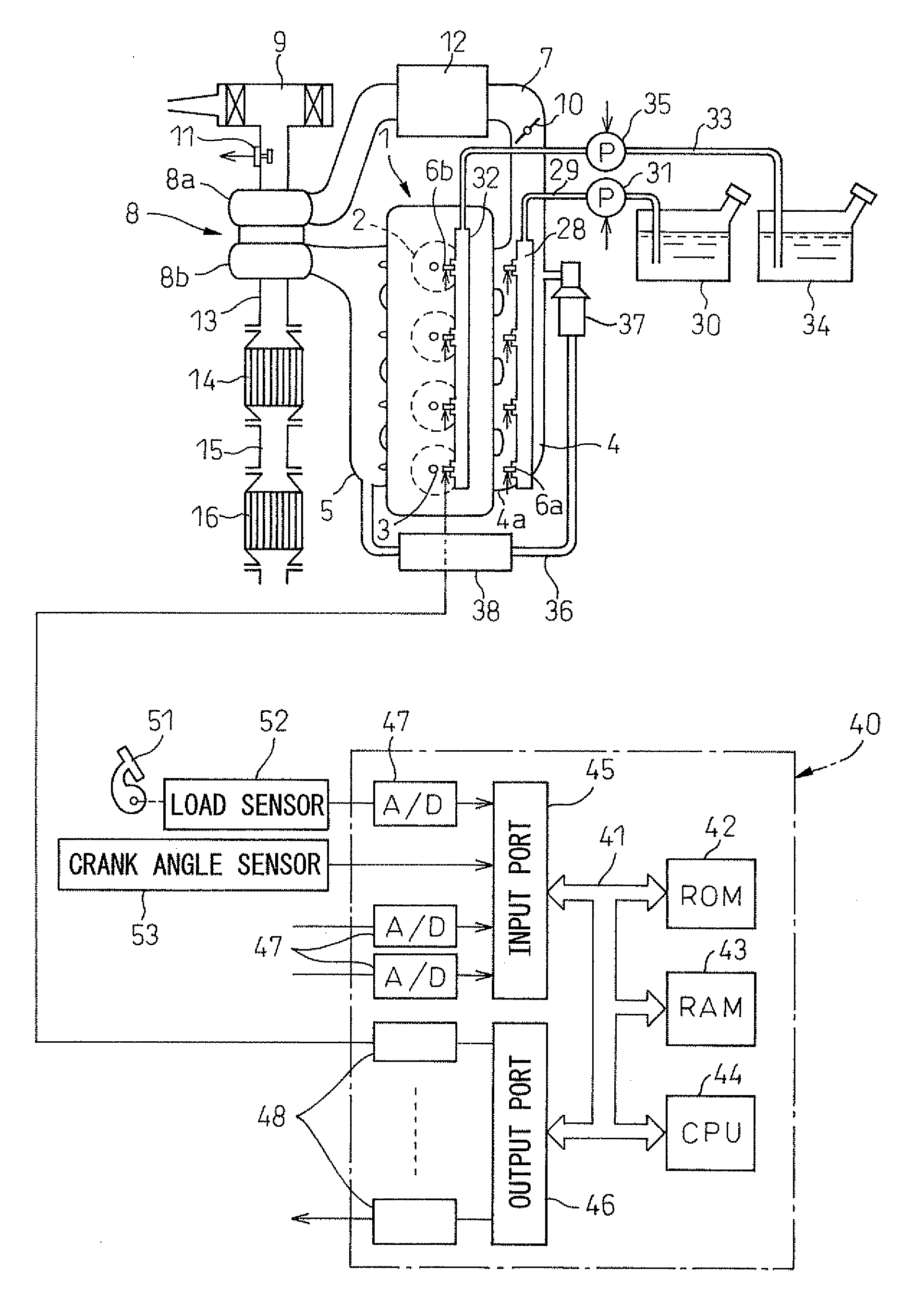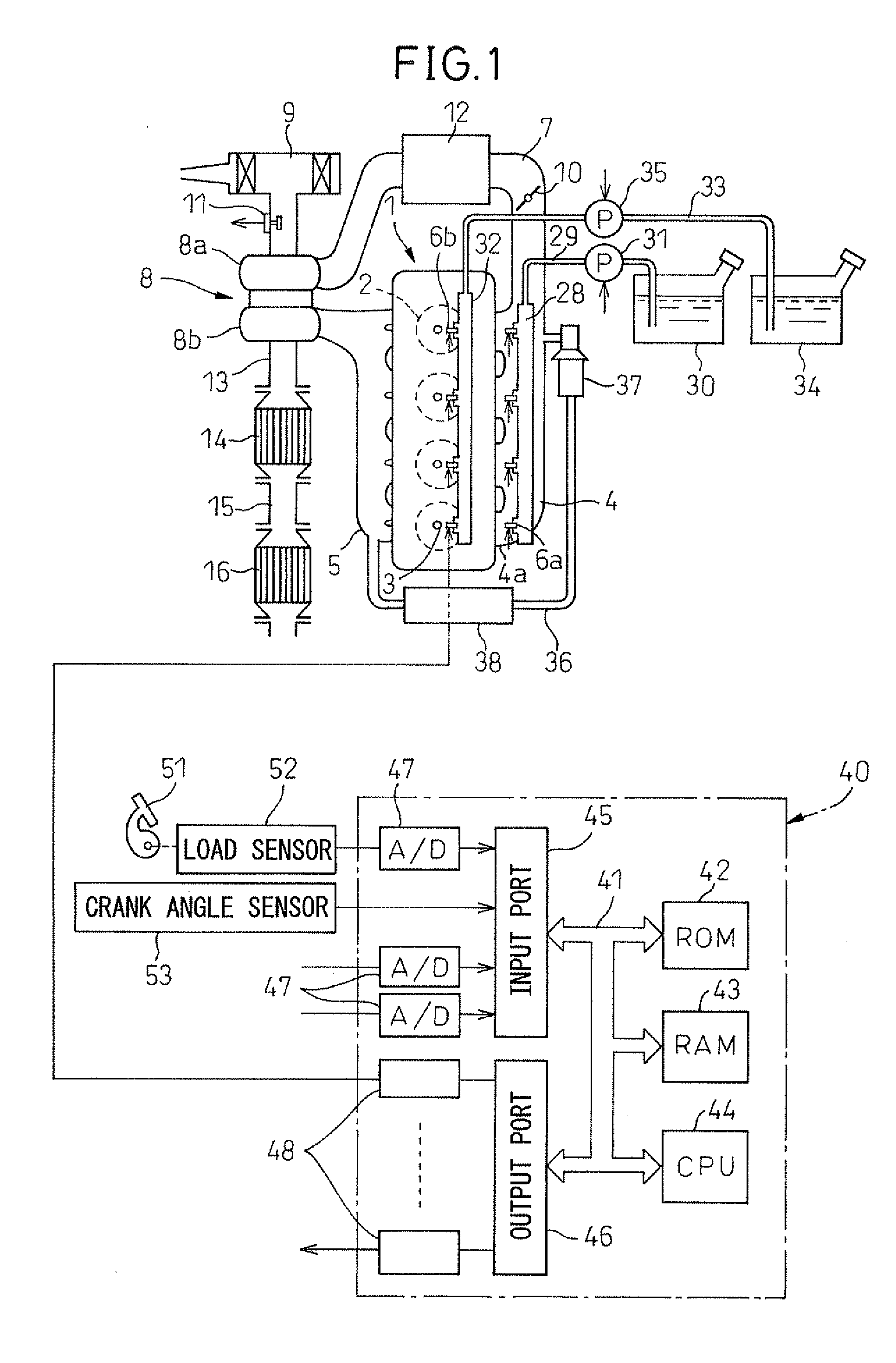Ammonia burning internal combustion engine
- Summary
- Abstract
- Description
- Claims
- Application Information
AI Technical Summary
Benefits of technology
Problems solved by technology
Method used
Image
Examples
first embodiment
[0119]First, the first aspect will be explained. In general, the higher the temperature of the air-fuel mixture in the combustion chamber 2 when the piston is located near the compression top dead center (hereinafter, referred to as the “compression end temperature”), the easier the combustion of the air-fuel mixture in the combustion chamber 5 becomes. Further, one method for making the compression end temperature rise, is to make the temperature of the intake gas fed into the combustion chamber 2 rise. Therefore, in the present embodiment, when the amount of ammonia fed into the combustion chamber 2 increases, the temperature of the intake gas fed into the combustion chamber 2 is made to rise.
[0120]FIG. 5 shows the relationship between the amount of ammonia fed into the combustion chamber 2 and the temperature of the intake gas fed into the combustion chamber 2. As shown in FIG. 5, in the present embodiment, as the amount of ammonia fed into the combustion chamber 2 increases, the...
second embodiment
[0131]Further, in the ammonia burning internal combustion engine of the second embodiment, the closing timing of the intake valve 24 can be changed by the variable valve timing mechanism. By changing the closing timing of this intake valve 24, the de facto compression ratio can be changed. That is, when the closing timing of the intake valve 24 is near the intake bottom dead center, the ratio of the volume of the combustion chamber when the piston is located at the compression top dead center with respect to the volume of the combustion chamber at the time of closing of the intake valve 24 is large. Conversely, when the closing timing of the intake valve 24 is a timing other than the intake bottom dead center, the ratio of the volume of the combustion chamber when the piston is located at the compression top dead center with respect to the volume of the combustion chamber at the time of closing of the intake valve 24 is small.
[0132]Here, if the ratio of the volume of the combustion ...
third embodiment
[0135]Next, the first aspect will be explained. As explained above, the higher the compression end temperature, the easier the air-fuel mixture in the combustion chamber 5 becomes to burn. One method of making such compression end temperature rise is to increase the amount of the intake gas (hereinafter, referred to as the “amount of filled intake gas”) filled in the combustion chamber 2 at the time of closing of the intake valve 24. Therefore, in the present aspect, when the amount of ammonia fed into the combustion chamber 2 increases or when the ratio of the amount of the ammonia to the total feed amount of the ammonia and highly combustible substance into the combustion chamber 2 increases, the amount of filled intake gas is made larger.
[0136]FIG. 10 shows the relationship between the amount of ammonia fed into the combustion chamber 2 and the amount of filled intake gas. As shown in FIG. 10, in the present embodiment, the larger the amount of ammonia fed into the combustion cha...
PUM
 Login to View More
Login to View More Abstract
Description
Claims
Application Information
 Login to View More
Login to View More - R&D
- Intellectual Property
- Life Sciences
- Materials
- Tech Scout
- Unparalleled Data Quality
- Higher Quality Content
- 60% Fewer Hallucinations
Browse by: Latest US Patents, China's latest patents, Technical Efficacy Thesaurus, Application Domain, Technology Topic, Popular Technical Reports.
© 2025 PatSnap. All rights reserved.Legal|Privacy policy|Modern Slavery Act Transparency Statement|Sitemap|About US| Contact US: help@patsnap.com



